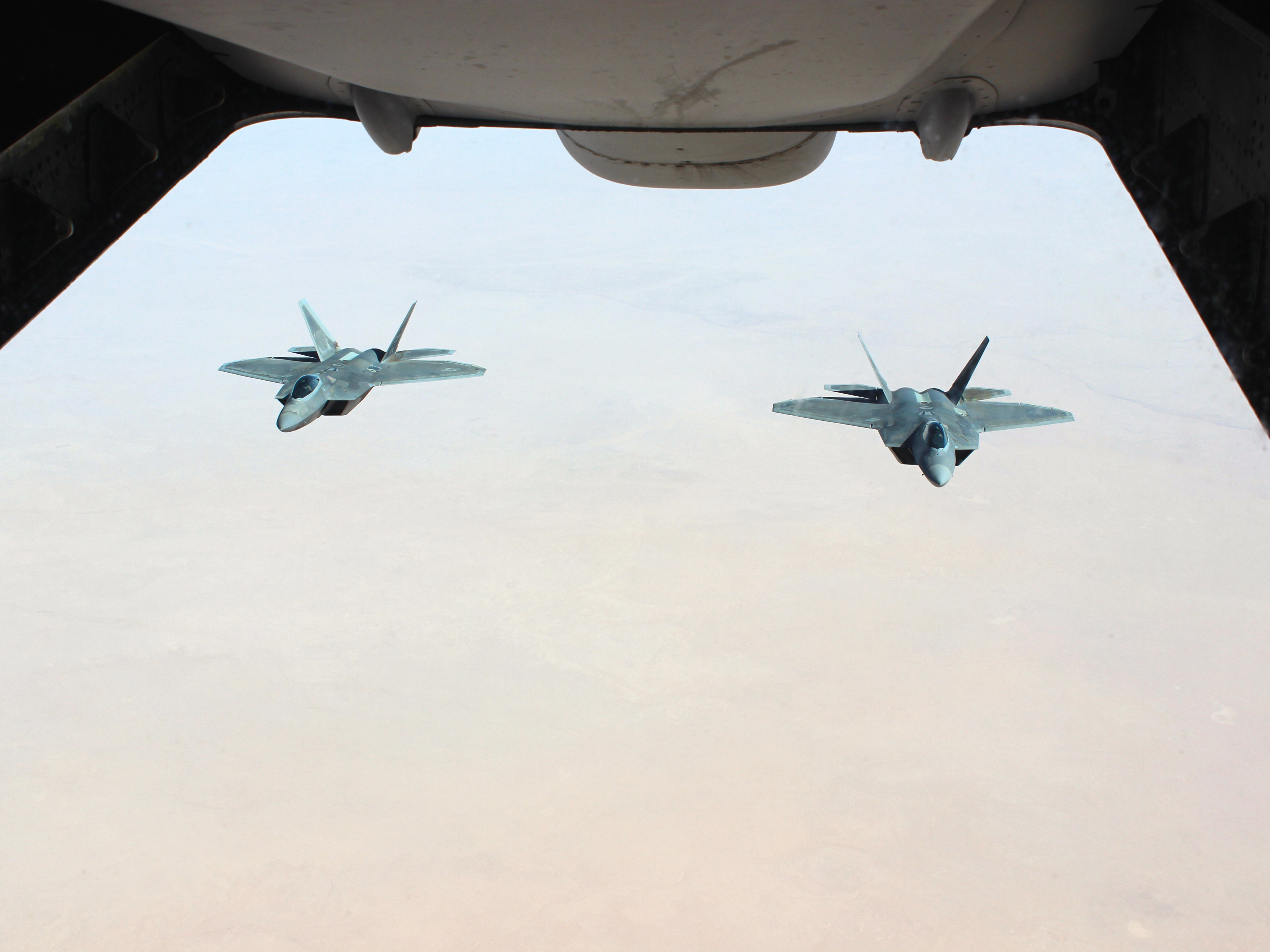Two F-22s from the 27th Expeditionary Fighter Squadron fly behind a KC-10 over Iraq in late September, 2017. Photo by Jennifer Hlad.
AL DHAFRA AB, United Arab Emirates—The 27th Expeditionary Fighter Squadron has a saying: “Just give OIR four weeks and it’ll be different.”
Lt. Col. Shell, the commander of the F-22 squadron, who asked to be identified only by his rank and call sign for security reasons, said the Raptors’ mission changes as Operation Inherent Resolve changes.
“The first mission I flew here… was America’s retaliatory TLAM strike,” he said. “Then, we were doing operations over Mosul, kind of interspersed in there, and also while we’ve been here, the Navy shot down the Su-22, so the ebb and flow of the fight has changed significantly since we’ve been here. It seems to change, anecdotally, about every four weeks or so.”
The oldest fighter squadron in the Air Force provides both air superiority and precision strike capabilities, even though the F-22 is primarily an air-to-air fighter, Shell noted.
“When we first got here, we were 95 percent precision strike. And now we’re probably 95 percent air superiority,” Shell said.
A lot of what the coalition does in OIR is “dynamic targeting and close-air support, which the F-22 is actually not optimized for,” he explained. “What we’re optimized for is the anti-air fight, but we are not in a peer-to-peer, state-to-state conflict against Syria, nor their partners, the Russians.”
Still, he said, because US, Russian, and Syrian assets are operating in the same battlespace, they tend to get close to each other, creating a need for deconfliction.
“Syrian ground troops are really close to US troops, the Syrian Democratic Force troops are intermingled in there, and then you throw ISIS obviously in there, because we’re all trying to surround, envelop, and then crush them. Those folks don’t necessarily get along with each other,” Shell explained.
The F-22 can help avoid a “strategic miscalculation” by deconflicting the airspace above the ground fight, Shell said.
“Everybody wants to fight ISIS. Nobody likes them. The Syrians don’t like them, the Russians don’t like them, we don’t like them, the SDF doesn’t like them. Nobody likes them,” he said.
“If a Russian aircraft drops weapons accidentally on US forces, and then a US aircraft shoots the Russian aircraft down … that now takes our fight away from the goal of ISIS,” Shell explained. “Our airplane allows us to see the air picture and try to guide and deconflict Russian and Syrian aircraft away from US positions so that a strategic miscalculation doesn’t occur and take everybody’s focus off the ISIS fight.”
